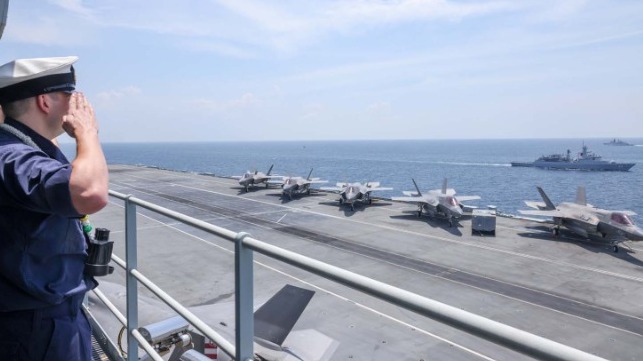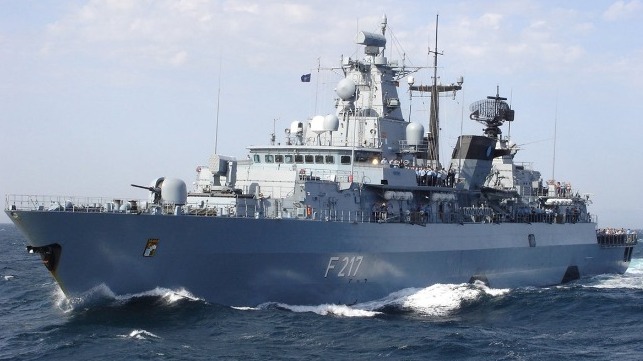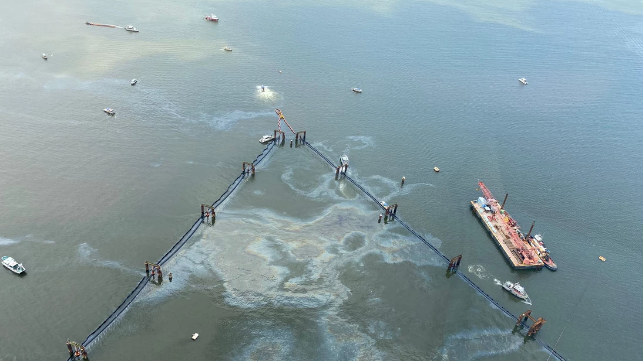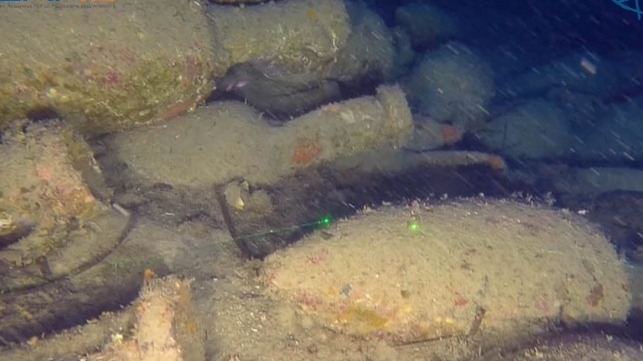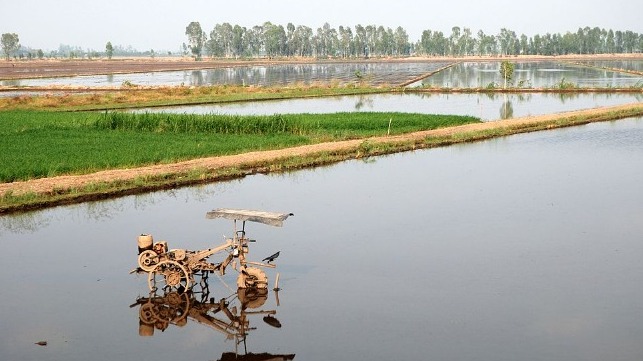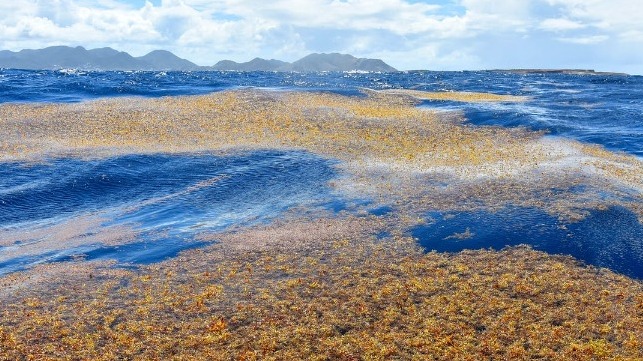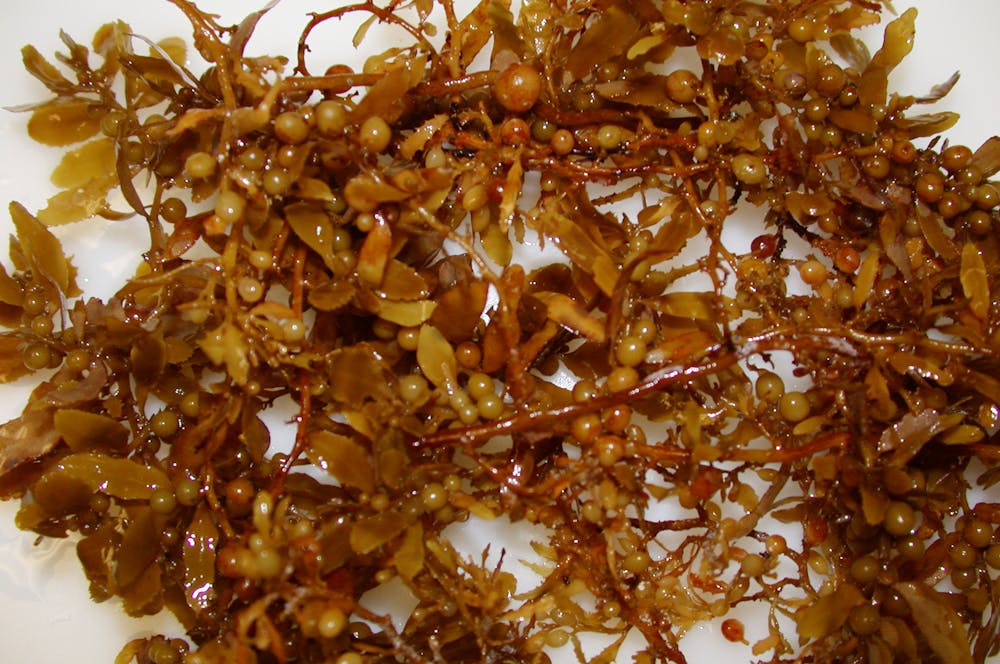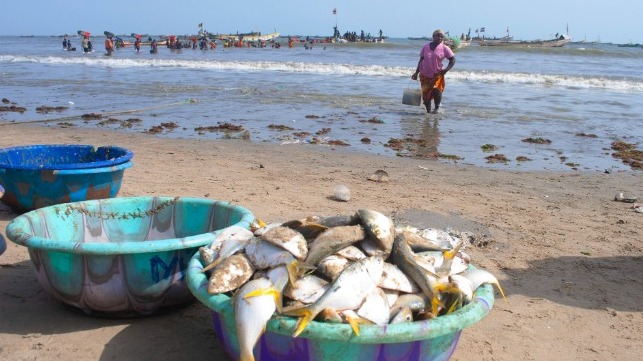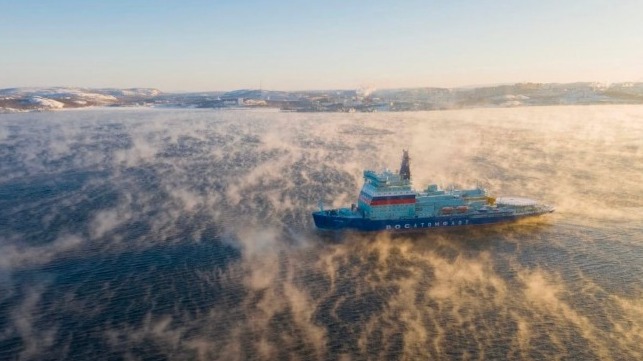IMB: Piracy and Armed Robbery at 27 Year Low in 2021
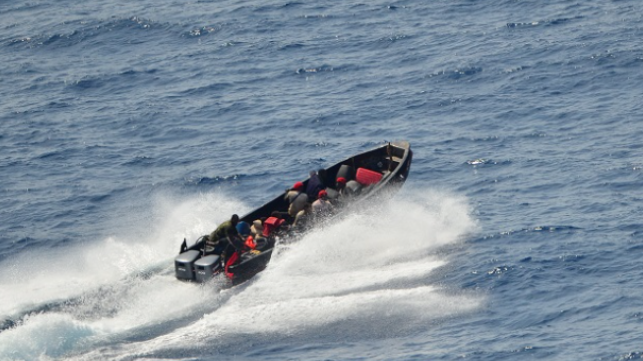
The ICC International Maritime Bureau (IMB) reported that the incidents of piracy and armed robbery are at their lowest levels in 27 years. The organization, which was founded in 1991, said that during the first half of 2021, it received the lowest number of reported incidents for the first half of any year since 1994. They, however, cautioned, that the risks remain for seafarers and especially in certain regions of the world.
IMB’s latest global piracy report details 68 incidents of piracy and armed robbery against ships during the first six months of 2021 compared to 98 incidents during the same period last year. The IMB’s Piracy Reporting Centre (PRC) highlighted that in 91 percent of the incidents, 61 vessels, the ships were boarded. In addition, four attacks were attempted, two vessels were fired upon, and one vessel was hijacked since January 2021. Despite the overall decline in reported incidents, violence against crews continued with 50 crew kidnapped, incidents where crew were threatened, taken hostage, or assaulted, and one crew member was killed and another injured.
The Gulf of Guinea continues to be particularly dangerous for seafarers, with 32 percent of all reported incidents taking place in the region, according to IMB. The region accounted for all 50 kidnapped crew and the single crew fatality during the first half of 2021.
The number of kidnappings recorded in the Gulf of Guinea, however, during the most recent quarter was the lowest since the second quarter of 2019. IMB warns that the pirates continue to target all types of vessels operating in the region and that fishing vessels have been hijacked in the Gulf of Guinea and later used as mother ships to target other merchant vessels.
“Whilst IMB welcomes reduced piracy and armed robbery activity in the Gulf of Guinea, the risk to seafarers still remains,” said IMB Director Michael Howlett. “By reporting all incidents to the Regional Authorities and IMB PRC, seafarers can maintain pressure against pirates. Bringing together maritime response authorities through initiatives – like Nigeria’s Deep Blue Project and Gulf of Guinea Maritime Collaboration Forum – will continue and strengthen knowledge sharing channels and reduce risk to seafarers in the region.”
As with other security organizations, the IMB is also warning that the pirates in the Gulf of Guinea are carrying out attacks further from the coast. For example, in early June, a bulk carrier was approached by a skiff with six pirates while approximately 210 nautical miles off the coast of Lagos, Nigeria. In that instance, the vessel was able to prevent the armed pirates from coming onboard, but it illustrates the distances at which the pirates are threatening vessels.
IMB also highlights the dangers of operating in the Singapore Strait, similar to the numerous reports of boardings and thefts from ReCAAP. Sixteen incidents were reported to the IMB center in the first six months of 2021. This was up from 11 reported incidents during the same period in 2020 in the Singapore Strait. According to IMB, these attacks are considered opportunistic, but in seven of the incidents, the perpetrators were armed with knives. In three separate incidents, seafarers were reported to have been either threatened, assaulted, or injured.
The report also highlights an increase in incidents in Peru’s Callao Anchorage. There were four reports in the second quarter of 2021 with knives reported in three of these attacks. In comparison to the first half of 2019 and 2020, IMB reports that this represents a two-fold increase in the number of incidents, with nine incidents reported in total for 2021. Perpetrators in the region possess the capacity to carry out violent attacks, with two separate incidents of crew being taken hostage and assaulted occurring in the first six months of 2021.
Vessels are also advised to take precautionary measures while anchored in Manila Bay, Philippines. IMB recorded four incidents during the second quarter of 2021.
Robbery and Piracy Declines in 2021 Except in the Singapore Strait
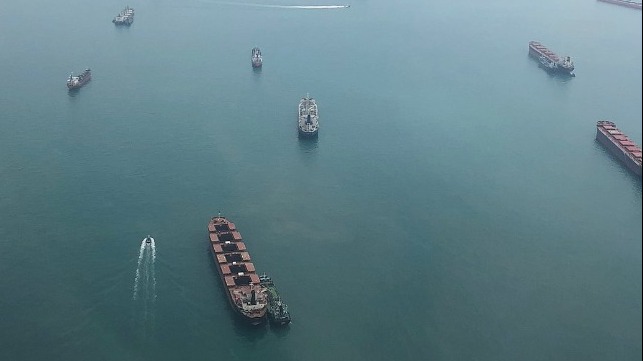
The regional organization that coordinates efforts to combat piracy and armed robbery against ships in Asia, ReCAAP, has once again issued a warning about the level of activity in the Singapore Strait and in particular in one zone near Bintan Island, Indonesia. ReCAAP reported two additional incidents on July 17, while the organization reported a decline in overall activity during the first half of 2021.
The latest incident alert reports that there were two unauthorized boardings both on July 17 while each ship was underway off Tanjung Pergam, Bintan Island, Indonesia. The two incidents occurred approximately 30 minutes apart and in the same area of the Singapore Strait in the eastbound traffic lane. In both cases, the boarders were spotted by the crew members that reported that the boarders were armed with knives. In one incident they were seen in the engine room and the other in the steering gear room. In both cases, they fled once they were discovered and both ships reported that their crew was unharmed and nothing had been stolen.
“The ReCAAP ISC is concerned with the persistent occurrence of incidents in the Singapore Strait, particularly a cluster of incidents off Tanjung Pergam, Bintan Island, Indonesia,” the alert said. “Since January 2021, a total of 22 incidents occurred in the Singapore Strait, with 18 incidents occurred off Tanjung Pergam.”
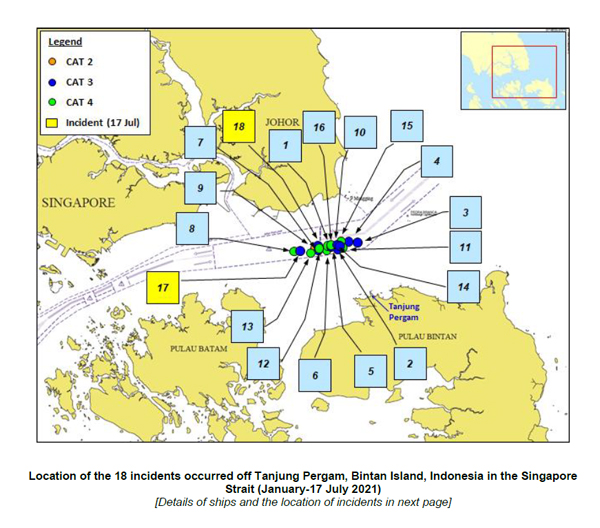
ReCAAP is again warning ships to increase their safety efforts and lookouts, especially at night when most of the boardings have occurred. In half of the incidents, the boarders were armed with knives and in six cases engine spare parts were stolen. In two of the incidents, the crew was also assaulted.
News of the latest boardings came just after ReCAAP issued its six-month report during which time it says armed robbery against ships in the region declined by more than a third versus 2020. While there were 35 incidents and two attempts, there were no reports of piracy, only pretty crimes, and 20 of the incidents detailed in the six-month report were in the area of the Singapore Strait. That represented a 25 percent increase in reported incidents over 2020 in the Strait.
Overall, the severity of the incidents also declined during 2021. In more than two-thirds of the reports, the perpetrators were not armed, and no crew was harmed. In addition, there were no abductions of crew in the Sulu-Celebes Seas and the waters off Eastern Saba, with the last incident in January 2020. Further, the four crew members abducted in January 2020 were rescued in March 2021 by the Philippine authorities.
While incidents are down overall in the region, ReCAAP highlights that there have also not been arrests to disrupt the gangs that have carried out some recent boardings of ships. As such, they repeated the call for cooperation and reporting warning ships to remain on guard at all times.
